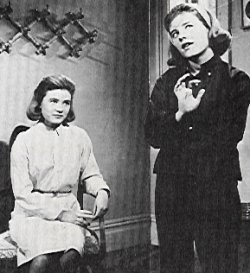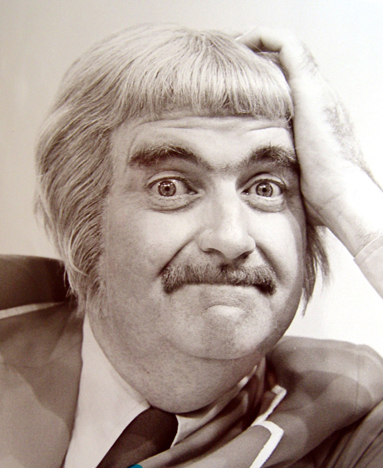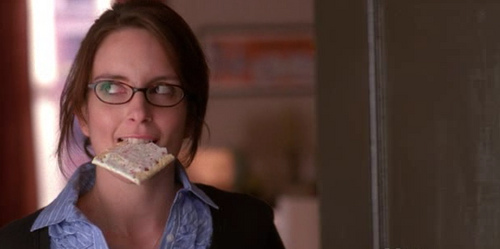Flow Remembers the Work of Alexander Doty:
I Love Shari: My Queerly Feminist Life with TV

Shari Lewis
Since this is my first column for FlowTV, I thought I might reveal a few secrets about my televisual past in order to provide a suggestive background for later columns by indicating some of the ways television has called out to my queerness and feminism. If television didn’t exactly make me queer or a feminist, it provided almost daily feeding and provoking of what became the queer and the feminist in me. Of course, I am (re)reading my televisual past as the person and the scholar I am now. But even though I didn’t understand my early television fascinations as “queer” or “gay” or “feminist” at the time, I still think this simultaneously autobiographical and critical exercise is one valuable way of constructing intertwined personal and cultural televisual histories that (re)place queerness and feminism deep within the heart of the mainstream.
Out of the haze of a black-and-white television set come my first role models: Shari Lewis and Captain Kangaroo. Shari was perky-with-a-ponytail personified, and she was smart: a multi-talented dynamo who was a ventriloquist, singer, dancer, and musician (and, I later discovered, a writer and producer). But what really drew me to Shari was Lambchop, one of her hand puppets. Where Shari was sweet and patient, Lambchop was selfish and opinionated. Where Shari would sing about cooperation and sharing, Lambchop would loudly demand attention and bling. For a sissy Catholic Army brat, Shari was the sensible and accomplished person I felt I should strive to become, but Lambchop was the show-offy diva this frustrated queer boy often wanted to be. She was, in short, the Miss Piggy for my generation.

Patty and Cathy on The Patty Duke Show
This was not the last time I would become fascinated by a Jekyll-and-Hyde pair on television. At around age ten, I transferred my Shari-and-Lambchop love to Patty and Cathy of The Patty Duke Show (a ripoff of the Haley Mills film The Parent Trap, which I also loved, loved, loved). Sophisticated, intellectual, European Cathy and her wacky free-spirited “twin” American cousin Patty offered distinct and appealing psycho-social choices for a girly bookwormy tween who was also dying to do something attention-getting. What The Patty Duke Show had that The Shari Lewis Show did not was the “twins played by the same actor” gimmick, which heightened the show’s suggestion that one person could have two distinct personas because who you “were” was really just a big performance. After all, Patty and Cathy would often completely fool other people—even parents and boyfriends—by pretending to be each other. My attempts at being both Patty and Cathy throughout late grade school and well into junior high did pay off. A combination of Patty’s manic energy and Cathy’s verbal dexterity allowed me to flummox most sissy-bashing boys—and I was named both “Most Likely to Succeed” and “Class Clown.”

Captain Kangaroo
If Shari, Lambchop, Patty, and Cathy represented the women I wanted to be, Captain Kangaroo (Bob Keeshan) showed me the man I could be. A far cry from the Army men and jocks surrounding me at home and at school, the husky Captain Kangaroo was soft-spoken, considerate, a good listener, and had a lovely relationship with another man, the lanky farmer Mr. Green Jeans (Hugh “Lumpy” Brannum). He may have been a “Captain,” but he never ordered people around, being more concerned that everyone was comfortable, happy, and learning something new every day.
But if I identified with the Captain, my early televisual heartthrobs ran more along the lines of Mr. Green Jeans: tall, dark, sinewy, and laconic. Sort of like my father, actually. As it turns out, I have my father to thank for introducing me to my first set of TV dream men (well, there was Mighty Mouse, but we won’t go into that now). The “Master of the Channel Changer Knob” (and, later, “King of the Remote”) favored action-adventure shows. Given the choice, I would never have watched Bonanza, Combat, or Rawhide. But once I discovered Adam Cartwright/Pernell Roberts, Lt. Gil Hanley/Rick Jason, and Rowdy Yates/Clint Eastwood, nothing could keep me from lying in front of the television set (a position that allowed for some discreet erotic “fidgeting” against the carpet) when these shows were on.

Hunky Pernell Roberts as Adam Cartright on Bonanza
I was most obsessed with Adam, who always dressed in black, revealed chest hair, and sported an impressive five o’clock shadow. Who wouldn’t fall for this dark, stylish hunk of bad boy rough trade? Well, my sisters, for two, who preferred the sensitive, smooth, pretty boy Little Joe/Michael Landon. And there, my friends, is the difference between a queer boy moving toward a “gay clone” young adulthood in the 1970s and straight girls moving toward an “I’ll get married, but he’d better not tell me what to do” future. I sometimes wonder whether my devotion to these shows gave my father some dim hope that I might turn out to be a straight boy, after all—or if that squirming on the carpet wasn’t as discreet as I thought.

Marlo Thomas as That Girl
As I entered my teens, television started to become all about sitcoms, especially sitcoms centered around women: Bewitched, The Lucy Show, That Girl, Julia, The Mary Tyler Moore Show, Maude, Rhoda, Laverne and Shirley, Alice, Designing Women, The Golden Girls, Murphy Brown, Kate and Allie, and Roseanne. Many of these series later seemed to be perfect examples of Adrienne Rich’s “Compulsory Heterosexuality and Lesbian Existence.” Certainly there were sharp and strong women characters in American drama series from the late 1960s through the early 1990s, particularly in large ensemble dramas like Hill Street Blues, LA Law, St. Elsewhere and ER. But, aside from Cagney and Lacey and Murder, She Wrote, television drama was not where women were consistently being placed front-and-center to cut loose and dominate the proceedings. Even though they are technically variety shows, I’m going to include Laugh-In and The Carol Burnett Show here because the former was always about Lily Tomlin, Joanne Worley, and Ruth Buzzi for me (not so much the then ditzy, bikini-clad Goldie Hawn), while The Carol Burnett Show, among its other glories, developed its own sitcom-within-a-variety-show, Mama’s Family.

Liz Lemon doesn’t quite cut it
If I’ve missed anything on 21st-century American television, it has been the dearth of women-centered sitcoms (OK, the dearth of good sitcoms, period). Yes, there were Sex and the City and The New Adventures of Old Christine, and, no, I don’t consider Desperate Housewives or Ugly Betty sitcoms. Recent shows like 30 Rock and Parks and Recreation can’t really be called woman-focused, even if Tina Fey and Amy Pohler perform in, co-produce, and occasionally write for them. Should I give Cougar Town a try? I certainly will be watching (and may report on) Hot in Cleveland, a new TV Land series that promises some good, old-fashioned, female sitcom pleasure just by bringing together Betty White (The Mary Tyler Moore Show, The Golden Girls), Wendie Malick (Just Shoot Me), Valerie Bertinelli (One Day at a Time), and Jane Leeves (Frasier). People keep telling me that I need to watch Weeds, The United States of Tara, and Nurse Jackie, but I haven’t subscribed to pay cable stations in over ten years. Maybe it’s time to start again.
Image Credits:
1. Shari Lewis
2. Patty and Cathy on The Patty Duke Show
3. Captain Kangaroo
4. Hunky Pernell Roberts as Adam Cartright on Bonanza
5. Marlo Thomas as That Girl
6. Liz Lemon doesn’t quite cut it
Please feel free to comment.
Pingback: Our Beautiful Wickedness: On Reading Films Queerly. In Memory of Alexander Doty | World Film History
The author seems to state that Shari Lewis was a “Catholic Army brat.” In fact, Ms. Lewis was “100%” Jewish; both of her parents were Jewish and her father taught at Yeshiva University.